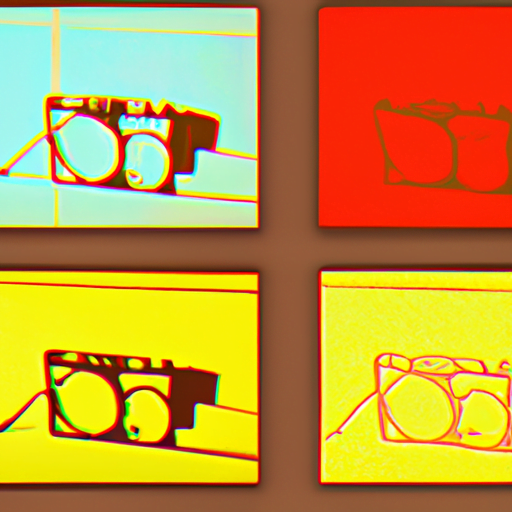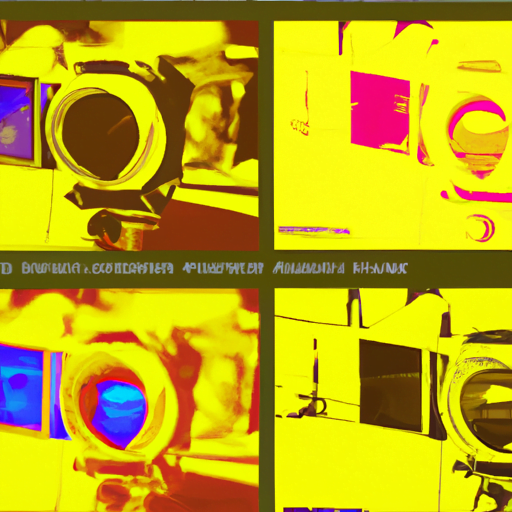
-
Table of Contents
Designing for Augmented Reality Filters and Lenses

Augmented reality (AR) has become an increasingly popular technology, with applications ranging from gaming to marketing. One of the most engaging and interactive aspects of AR is the use of filters and lenses, which allow users to modify their appearance or surroundings in real-time. Designing effective and captivating AR filters and lenses requires a deep understanding of user experience, technical considerations, and creative design principles. In this article, we will explore the key factors to consider when designing for AR filters and lenses, along with examples and case studies that highlight successful implementations.
The Power of AR Filters and Lenses
AR filters and lenses have gained immense popularity in recent years, thanks to social media platforms like Snapchat and Instagram. These filters and lenses allow users to overlay digital elements onto their real-world environment, creating a unique and interactive experience. From adding virtual accessories to transforming facial features, AR filters and lenses have become a form of self-expression and entertainment.
One of the main reasons for the success of AR filters and lenses is their ability to provide instant gratification. Users can see the effects of the filters in real-time, making the experience highly engaging and shareable. Additionally, the interactive nature of AR filters and lenses encourages users to spend more time on the platform, increasing user retention and driving user-generated content.
Understanding User Experience
When designing AR filters and lenses, it is crucial to prioritize user experience. The success of an AR filter or lens depends on how well it resonates with the target audience and enhances their overall experience. Here are some key considerations for designing a user-centric AR filter or lens:
- Identify the target audience: Understanding the demographics, preferences, and behaviors of the target audience is essential for creating a filter or lens that appeals to them. Conducting user research and gathering feedback can provide valuable insights into user expectations and preferences.
- Keep it simple: AR filters and lenses should be intuitive and easy to use. Complex interactions or overwhelming visual elements can lead to a poor user experience. Designers should focus on simplicity and clarity to ensure users can quickly understand and engage with the filter or lens.
- Personalization: Providing options for customization and personalization can enhance user engagement. Allowing users to modify the filter or lens according to their preferences can create a sense of ownership and increase the likelihood of sharing the experience with others.
- Performance optimization: AR filters and lenses should be optimized for performance to ensure smooth and seamless user interactions. Long loading times or laggy animations can frustrate users and lead to a negative experience. Designers should consider the technical limitations of the platform and optimize the filter or lens accordingly.
Technical Considerations
Designing for AR filters and lenses also requires a solid understanding of the technical aspects involved. Here are some key technical considerations to keep in mind:
- Platform compatibility: Different platforms may have varying requirements and capabilities for AR filters and lenses. Designers should ensure that the filter or lens is compatible with the target platform and takes advantage of its unique features.
- Tracking and mapping: AR filters and lenses rely on accurate tracking and mapping of the user’s environment. Designers should consider the limitations of the tracking technology and design filters or lenses that work well in different lighting conditions and environments.
- Optimized file size: AR filters and lenses should have an optimized file size to minimize loading times and reduce bandwidth usage. Compressing images and videos without compromising quality can help improve the overall performance of the filter or lens.
- Testing and iteration: It is essential to test the AR filter or lens on different devices and platforms to ensure compatibility and performance. Regular iteration and updates based on user feedback can help refine the design and address any technical issues.
Examples and Case Studies
Let’s explore some examples and case studies that demonstrate successful implementations of AR filters and lenses:
1. Snapchat’s Face Filters
Snapchat’s face filters have become iconic, allowing users to transform their appearance with various effects. The success of Snapchat’s face filters can be attributed to their simplicity, real-time performance, and wide range of options. Users can easily swipe through different filters, instantly seeing the effects on their face. Snapchat also regularly introduces new filters, keeping the experience fresh and engaging.
2. Instagram’s Spark AR
Instagram’s Spark AR platform has opened up AR filter creation to a wider audience. It allows users to create and share their own AR filters, resulting in a vast library of user-generated content. Instagram’s AR filters range from face filters to interactive effects that respond to user movements. The platform’s focus on user-generated content has led to increased engagement and creativity among its users.
3. Gucci’s AR Sneaker Try-On
Gucci’s AR sneaker try-on experience allows users to virtually try on sneakers using their smartphone camera. This innovative use of AR not only provides a fun and interactive experience but also helps users make informed purchasing decisions. By overlaying virtual sneakers onto the user’s feet, Gucci enables users to visualize how the sneakers would look in real life, reducing the need for physical try-ons.
Summary
Designing for AR filters and lenses requires a holistic approach that considers both user experience and technical considerations. By understanding the target audience, keeping the design simple and intuitive, and optimizing for performance, designers can create engaging and user-centric AR filters and lenses. Platforms like Snapchat and Instagram have demonstrated the power of AR filters and lenses in driving user engagement and creativity. As AR technology continues to evolve, designers have an exciting opportunity to push the boundaries of creativity and create immersive experiences that captivate users.
